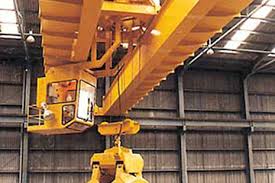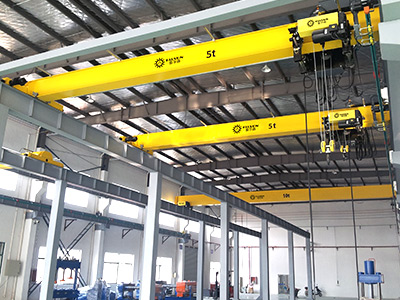The TLILIC0016 Licence to operate a bridge and gantry crane unit of competency specifies the outcomes required to operate a bridge and gantry crane with 4 powered moves or more safely and efficiently.
This unit is based on the National Standard for Licensing Persons Performing High Risk Work and meets state and territory licensing requirements.
The course covers all the necessary knowledge and skills required to operate a bridge and gantry crane, including crane pre-start checks, site, equipment and loads assessment, risk assessment, communication, crane operations, shut-down procedures, and safety measures.
The course duration may vary depending on the training provider and involves a combination of theoretical and practical training, assessments, and supervised crane operation.
Upon successful completion of the course, candidates will be issued with a high-risk work licence (CB) for bridge and gantry crane operation.
We can come to you
Personalized Proficiency: On-Site Training for Licence to Operate a Bridge and Gantry Crane at Your Premises
Operating a Bridge and Gantry crane demands specialized skills and expertise to ensure efficient and safe material handling. In response to the unique training needs of businesses and organizations, our training organistion now offers the convenience of on-site training.
With the option to deliver training for Licence to Operate a Bridge and Gantry Crane at the client's premises, companies can equip their workforce with tailored knowledge and hands-on experience. Listed below are the benefits of on-site training, the comprehensive scope it offers, and its relevance in promoting safety and compliance in crane operations.
1. The Advantages of On-Site Training
On-site training for Licence to Operate a Bridge and Gantry Crane offers several advantages that make it an attractive choice for businesses seeking to enhance their workforce's proficiency:
a. Customized Content: On-site training allows training providers to customize the program to the specific requirements of the client's industry and work environment. This ensures that the training aligns perfectly with the organization's unique crane operation challenges.
b. Reduced Downtime: Sending employees to off-site training can lead to significant downtime and reduced productivity. On-site training eliminates travel time, saving time and resources for both the organization and its employees.
c. Practical Relevance: Training in a familiar work environment provides trainees with practical perspectives, enabling them to apply their newly acquired knowledge directly to real-world crane operations and scenarios.
d. Team Cohesion: Conducting training on-site fosters team building and enhances communication among employees. It enables them to work together and apply their skills collaboratively, which is particularly beneficial in crane operations.
2. Comprehensive On-Site Training Scope
On-site training for Licence to Operate a Bridge and Gantry Crane covers a wide range of crucial topics, ensuring participants are well-equipped to handle crane operations with precision and safety:
a. Theoretical Fundamentals: Trainees gain a comprehensive understanding of Bridge and Gantry crane mechanics, control systems, load capacity calculations, and safety protocols.
b. Hands-On Practical Experience: Practical training involves hands-on experience in operating Bridge and Gantry cranes under the guidance of experienced instructors, allowing trainees to develop their skills in a controlled setting.
c. Risk Assessment and Safety: On-site training emphasizes the importance of risk assessment and hazard identification, ensuring participants can identify and mitigate potential dangers during crane operations.
d. Compliance with Regulations: Training covers the legal requirements and industry standards for Bridge and Gantry crane operations, ensuring employees operate in full compliance with safety regulations.
3. Promoting Safety and Compliance
On-site training plays a crucial role in promoting safety and compliance in crane operations. By delivering tailored training at the client's premises, participants can better understand site-specific risks, reducing the likelihood of accidents and ensuring adherence to safety protocols.
Conclusion
On-site training for Licence to Operate a Bridge and Gantry Crane offers businesses a convenient and personalized approach to equip their workforce with essential crane operation skills. The advantages of on-site training, including tailored content, reduced downtime, and practical relevance, make it an excellent choice for organizations seeking to promote safety and compliance in crane operations. By investing in comprehensive on-site training, companies demonstrate their commitment to the well-being of their employees, ensuring they become more competent and efficient in handling crane operations. For businesses striving for optimized crane operations, on-site training for Licence to Operate a Bridge and Gantry Crane is a valuable solution that ensures a skilled and compliant workforce.



